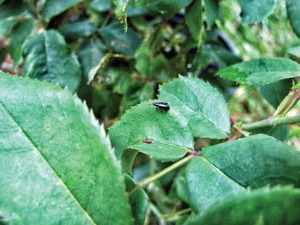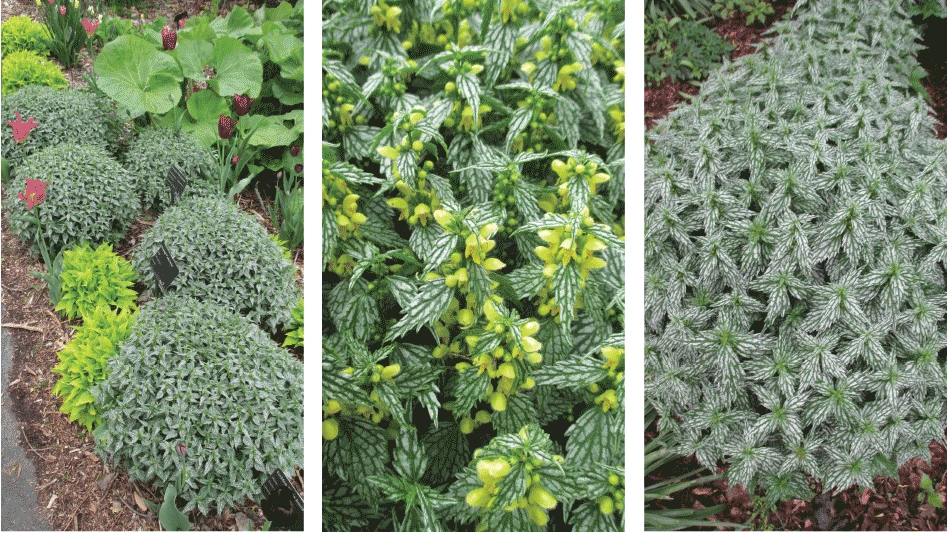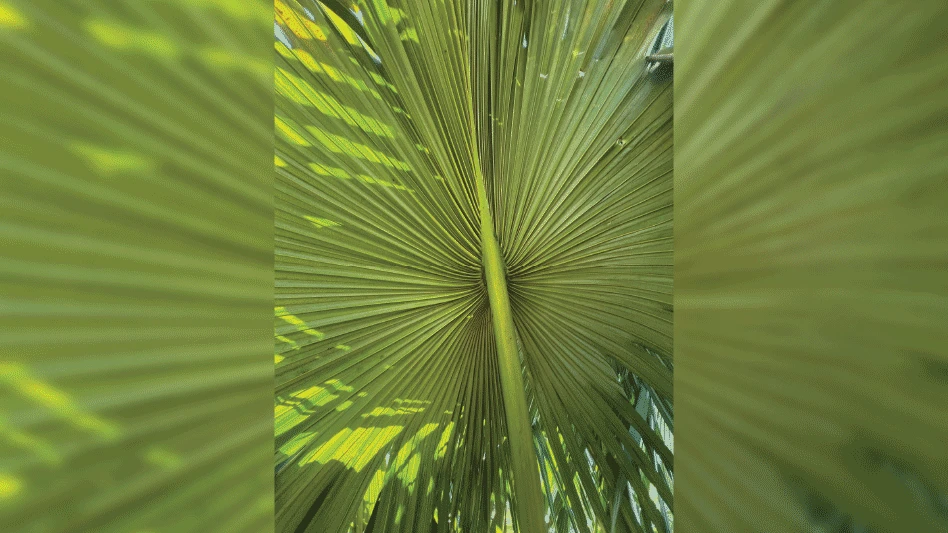
 The redheaded flea beetle (Systena frontalis) has become a serious nursery pest during the last few years, with reported incidences increasing each year. It’s not a new pest, but it’s a new problem, said Steven D. Frank, assistant professor in the department of entomology at North Carolina State University. And for some growers, it’s their biggest problem on some species, he added.
The redheaded flea beetle (Systena frontalis) has become a serious nursery pest during the last few years, with reported incidences increasing each year. It’s not a new pest, but it’s a new problem, said Steven D. Frank, assistant professor in the department of entomology at North Carolina State University. And for some growers, it’s their biggest problem on some species, he added.
The redheaded flea beetle attacks a number of woodies and perennials including crape myrtle, hydrangea, roses, buddleia, forsythia, sedum, salvia, hibiscus, rudbeckia and coreopsis.
“We were out at a nursery two or three years ago when this pest first became an issue,” Frank recalled. “A guy had a million and half Knock Out roses that were chewed up with these. It seems to get on some of the important plants that people grow a lot of.”
Feeding and ID
The redheaded flea beetle feeds on roots and leaves during its lifecycle, which makes it a bit more difficult to control, said Allan Dufoe, key account manager for the greenhouse and nursery market at FMC Professional Solutions.
“A solid monitoring system is important with this pest,” Dufoe said. “Sticky traps would help.”
 They overwinter as eggs in the soil, and larvae hatch in spring and begin feeding on roots. The larvae are elongate and creamy-white. Heavy infestations may reduce root mass or girdle plants. Adult redheaded flea beetles are small, shiny black beetles with a reddish to dark-colored head and long antennae. They are about 1/16 of an inch long and, as the name suggests, jump when they are approached.
They overwinter as eggs in the soil, and larvae hatch in spring and begin feeding on roots. The larvae are elongate and creamy-white. Heavy infestations may reduce root mass or girdle plants. Adult redheaded flea beetles are small, shiny black beetles with a reddish to dark-colored head and long antennae. They are about 1/16 of an inch long and, as the name suggests, jump when they are approached.
“We know of at least two generations in Delaware and possibly more in North Carolina,” Frank said.
Skeletonized leaves are a sign of adult feeding. But in fleshy types of leaves such as sedum, feeding symptoms can mimic the light colored linear patterns seen from leaf miners, said Steve Rettke, nursery-greenhouse IPM program associate at Rutgers Cooperative Extension.
Researchers have discovered that an infestation of the redheaded flea beetle in the nursery setting is often the result of a neighboring crop of corn or soybeans.
“When a nursery is adjacent to cropland, the pest tends to be more problematic,” Dufoe said.
The pests also feed on weeds including smartweed and jewelweed, so weed management is an important part of control, Dufoe added.
Control options
Researchers are working on control recommendations, and Frank worked with the IR-4 Project to learn more about controlling this pest (see a borer and beetle efficacy trial at http://bit.ly/1cWSUE1).
 “Dinotefuran and bifenthrin work well, and thiamethoxam works pretty well. Those seem to be the best, but the problem is we haven’t found anything that’s really great,” Frank said. “They protect to an extent, but nothing seems to do an awesome job. We need to come up with certain combinations of chemicals we can use in sequence.”
“Dinotefuran and bifenthrin work well, and thiamethoxam works pretty well. Those seem to be the best, but the problem is we haven’t found anything that’s really great,” Frank said. “They protect to an extent, but nothing seems to do an awesome job. We need to come up with certain combinations of chemicals we can use in sequence.”
Using insecticides effectively is all about the timing, because the pest feeds in the larvae and the adult stage, Dufoe said.
“Target larvae with bifenthrin in late April though late May, when the larvae is most active,” Dufoe said. “And target adults in mid- to late-May with a foliar spray of bifenthrin or imidacloprid.”
Brian Kunkel, extension specialist at the University of Delaware, is performing research on control of the redheaded flea beetle, including testing nematodes to control the larvae, Frank said.
Researchers in North Carolina and Delaware discovered that the emergence of adult redheaded flea beetles coincides with the first blooms of Magnolia grandiflora, Frank said. See more about Frank’s work with plant phenology and this pest at http://bit.ly/1b3WHRb.
Compiled by staff reports

Explore the February 2014 Issue
Check out more from this issue and find your next story to read.
Latest from Nursery Management
- These companies are utilizing plastic alternatives to reduce horticultural waste
- NewGen Boxwood added to Proven Winners ColorChoice line
- Terra Nova releases new echinacea variety, 'Fringe Festival'
- American Horticultural Society names winners of 2025 AHS Book Awards
- Nufarm announces unified brand
- American Horticultural Society announces winners of 2025 Great American Gardeners Awards
- Shifting the urban environment
- The Growth Industry Episode 3: Across the Pond with Neville Stein





